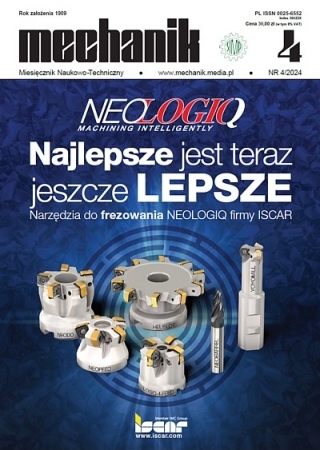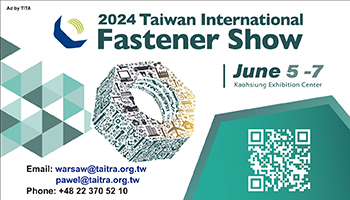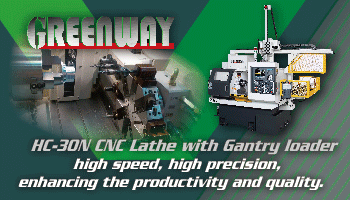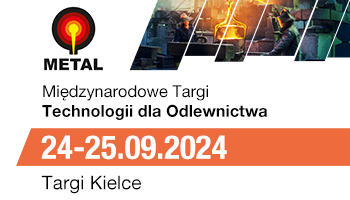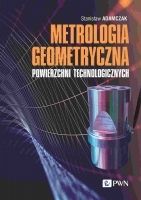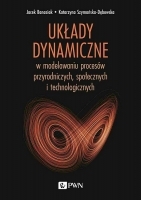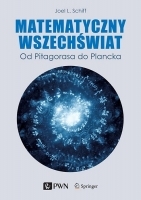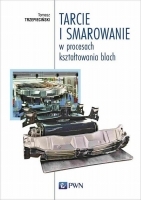Dwukierunkowe mikrogięcie laserowe dla układów MOEMS *
Bi-direction laser microbending for MOEMS
Mechanik nr 12/2016 - Nowe technologie
STRESZCZENIE: Bezdotykowa laserowa metoda mikropozycjonowania pozwala omijać ograniczenia tradycyjnych technik mechanicznych stosowanych przy montażu mikroukładów elektromechanicznych (micro-electro-mechanical systems, MEMS) oraz optoelektromechanicznych (micro-opto-electro-mechanical systems, MOEMS). Przedstawiono badania doświadczalne i symulacje numeryczne mechanizmu termicznego mikrogięcia, który pozwala uzyskiwać deformacje dwukierunkowe, to jest w kierunku do lub od padającej wiązki laserowej, w zależności od przyjętych parametrów obróbki. Zweryfikowany doświadczalnie model numeryczny umożliwił wyjaśnienie zachowania małych belek wysięgnikowych wykonanych ze stali nierdzewnej, poddawanych nagrzewaniu impulsem lasera Nd:YAG. Przy ustalonej długości impulsu kierunek gięcia zależy od mocy wiązki laserowej. Ujawniony mechanizm gięcia charakteryzuje się występowaniem znacznego dodatniego plastycznego odkształcenia wzdłużnego w obszarach brzegowych nagrzewanej belki. Deformacja wynika z dużego gradientu temperatury na szerokości belki, z pewnym udziałem gradientu na kierunku grubości. Zastosowanie tego mechanizmu otwiera nowe możliwości przed laserową technologią mikropozycjonowania, zwłaszcza gdy obrabiany element jest dostępny tylko zjednej strony.
SŁOWA KLUCZOWE: kształtowanie laserowe, gięcie laserowe, laserowe mikropozycjonowanie, mikroukłady optoelektromechaniczne
ABSTRACT: Laser-based non-contact micro-adjustment method is a way of going beyond limits of traditional mechanical techniques applied for precise alignment during assembly of micro-electro-mechanical and micro-opto-electro-mechanical systems (MEMS and MOEMS). This paper presents experimental and numerical investigation of thermal micro-bending mechanism, which enables bi-directional deformation, i.e. either towards or away from the incident laser beam, dependent on the applied processing parameters. Experimentally validated numerical model explained behavior of stainless steel cantilever beams subject to the heating by the Nd:YAG laser pulse. With constant pulse duration, direction of bending depends on the laser beam power. The revealed mechanism of bending involves significant positive longitudinal plastic strain in the edge regions of the heated beam. The deformation results from a considerable temperature gradient across the width of the cantilever beam, with some contribution of the temperature gradient in the thickness direction. Application of the mechanism opens up new opportunities for the laser-based microadjustment technology, particularly when the processed component is accessible from one side only.
KEYWORDS: laser forming, laser bending, laser micro-adjustment, MEMS, MOEMS
BIBLIOGRAFIA / BIBLIOGRAPHY:
- Sanada T., Watanabe H., Ushimaru A., Nomura M. “Development of high-speed and high-accuracy roll and pitch angle adjustment machine for HDD suspension”. J. Laser Micro Nanoeng. Vol. 4, No. 2 (2009): pp. 141–143.
- Widłaszewski J. “Applications of laser forming in micro technologies”. Adamczak S., Radziszewski L. (red.) Selected problems of modeling and control in mechanics. M19. Kielce: Wydawnictwo Politechniki Świętokrzyskiej, 2011, s. 96–106.
- Widłaszewski J. “Numerical modeling of the thermal upsetting mechanism in a two-bridge actuator”. Geiger M., Otto A., Schmidt M. (red.) Proceedings of the LANE 2007 (Laser Assisted Net Shape Engineering 5, International Conference). Bamberg: Meisenbach-Verlag, 2007, pp. 631-644.
- Widłaszewski J. “The effects of design parameters on the laser-induced in-plane deformation of two-bridge actuators”. Int J Machine Tools and Manufacture. Vol. 80-81C (2014): pp. 30–38.
- Folkersma K.G.P. “Laser forming for sub-micron adjustment: with application to optical fiber assembly”. University of Twente, 2015: http://dx.doi.org/10.3990/1.9789036540186 (dostęp: 24.03.2016).
- Liu J., Sun S., Guan Y., Ji Z. “Experimental study on negative laser bending process of steel foils”. Optics and Lasers in Engineering. Vol. 48 (2010): pp. 3–88.
- Bechtold P., Schmidt M. “Non-thermal micro adjustment using ultrashort laser pulses”. JLMN-Journal of Laser Micro/Nanoengineering. Vol. 2, No. 3 (2007): pp. 183–188.
- Griffiths J., Edwardson S.P., Dearden G., Watkins K.G. “Thermal laser micro-adjustment using picosecond pulse durations”. Applied Surface Science. Vol. 258 (2012): pp. 7639–7643.
- Sagisaka Y., Kamiya M., Matsuda M., Ohta Y. “Thin-sheet-metal bending by laser peen forming with femtosecond laser”. J Materials Processing Technology. Vol. 210, No. 15 (2010): pp. 2304–2309.
- Ye Y., Feng Y., Lian Z., Hua Y. “Mold-free fs laser shock micro forming and its plastic deformation mechanism”. Optics and Lasers in Engineering. Vol. 67 (2015): pp. 74–82.
- Sagisaka Y., Yamashita K., Yanagihara W., Ueta H. “Microparts processing using laser cutting and ultra-short-pulse laser peen forming”. J Materials Processing Technology. Vol. 219 (2015): pp. 230–236.
- Edwards R., Edwardson S.P., Carey C., Dearden G., Watkins K.G., “Laser micropeen forming without a tamping layer”. Int. J. Adv. Manuf. Technol. Vol. 47 (2010): pp. 191–200.
- Widłaszewski J. “Precise laser bending”. Geiger M., Vollertsen F. (red.) Proceedings of the LANE ’97 (Laser Assisted Net Shape Engineering 2, International Conference). Meisenbach Bamberg, 1997: pp. 393–398.
- Chen G., Xu X., Poon C.C., Tam A.C. “Experimental and numerical studies on microscale bending of stainless steel with pulsed laser”. J. Appl. Mech. Vol. 66, No. 3 (1999): pp. 772–779, DOI:10.1115/1.2791741
- Wang X.F., Chen G.N., Hu Sh.G., Takacs J., Krallics Gy, Su Y.P. “Research on dynamic micro-deformation under laser point source”. Int J Machine Tools and Manufacture. Vol. 45, No. 12–13 (2005): pp. 1515–1522.
- Hsieh H.-S., Lin J. “Thermal-mechanical analysis on the transient deformation during pulsed laser forming”. Int J of Machine Tools and Manufacture. Vol. 44 (2004): pp. 191–199.
- Zhang X.R., Xu X. “Finite element analysis of pulsed laser bending: The effect of melting and solidification”. Trans ASME, J Applied Mechanics. Vol. 71 (2004): pp. 321–326.
- Zhang X.R., Xu X. “High precision microscale bending by pulsed and CW lasers”. ASME J Manuf Sci Eng. Vol. 125, No. 3 (2003): pp. 512–518, DOI: 10.1115/1.1580528.
- Zhang X.R., Xu X. “Laser bending for high-precision curvature adjustment of microcantilevers”. Appl. Phys. Lett. Vol. 86 (2005) 021114.
- Jurgenson R., Danielson R.C., Lien B.D., Lewandowski M.S. “In-stack adjustable magnetic head suspension”. United States Patent US5995335 (1999).
- Hu Y., Xu X., Yao Z., Hu J. “Laser peen forming induced two way bending of thin sheet metals and its mechanisms”. J. Appl. Phys. Vol. 108 (2010) 073117.
- Mucha Z., Widłaszewski J., Cabaj M., Gradoń R. “Surface temperature control in laser forming”. Archives of Thermodynamics. Vol. 24, No. 2 (2003): pp. 89–105.
- Chen J., Young B. “Stress-strain curves for stainless steel at elevated temperatures”. Engineering Structures. Vol. 28 (2006): pp. 229–239.




